 |
|||||||
|
|
|||||||
|
|
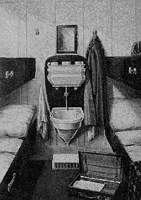 |
|
|||||
|
The four parlor suite cabins (far left) were located on B - deck were made mainly for 1st class passengers, making them the most expensive acommodations on board. These suites contained: two bedrooms, a sitting room and a private bath and lavatory. Every stateroom had an electric light and heating. There were 30 suite rooms on the Bridge deck (A - deck) and 39 on the shelter deck (B - deck). On each of these two decks, quite close to the companionways, on either side, adjaenct rooms were fitted up as a sitting or dining room. All in all, there were 350 first class rooms, 100 of these being single rooms. These would have cost from £870 (or $4,350), and would have ranged to $50,000 today. Then we have the third class cabin (middle) which was located in the lower parts of the ship, with the womens cabins being uncomfortably near to the propellors. They were the least desirable of accomadations on the Titanic. The mens quarters were at the front (the bow) of the ship. They contained a single toilet, a heater, a mirror and two bunkbeds. It would have been extremely crowded. Almost all third class cabins were covered in pine, with veitchi floor coverings. They ranged from £3 ($15) to £8 ($40, $170 - $460 today!) And that leaves us with the second class cabin (far right). While not being as luxurious as the first class suites and berths, but surpassed the accomadations of many passenger vessels of those days. Second class rooms were arranged as two to four berth, each with mahogany furniture, sofa beds and linoleum tile floors. These cabins were located on E - deck, and ranged from £12 ($60, $690 today). |
|||||||
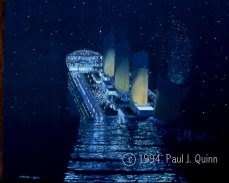 |
| And excellent painting of the Titanic in her final hours, just as the first smokestack collapsed, smashing several people in the water. |
| (This painting was featured on the back of the Titanic Commutator in 1997). |
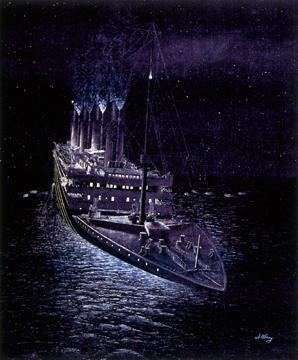 |
| This painting depicts the Titanics bow sinking deeper and deeper below the freezing Atlantic waters. |
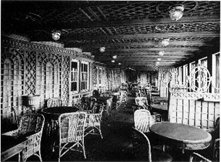 |
| The café was located on one of the upper decks and a popular place among the higher passengers. |
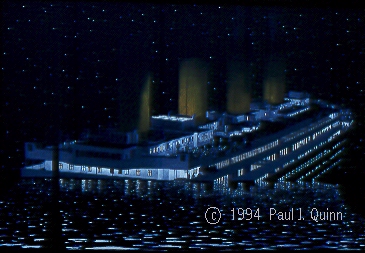 |
| Panic begins to spring up among the passengers still on the ship, as the bow is now completely submerged under the water. The stern rises higher and higher up out of the water. |
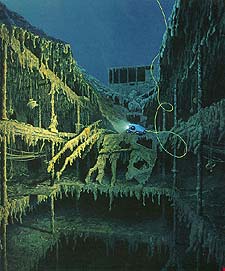 |
| This painting shows a submersible searching the rusted and decrepid ruins of the Titanics many decks. |
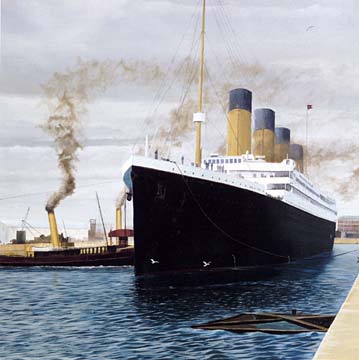 |
| A brilliant and majestic photo of the Titanic docked in Southampton, waiting for its passengers to board. |
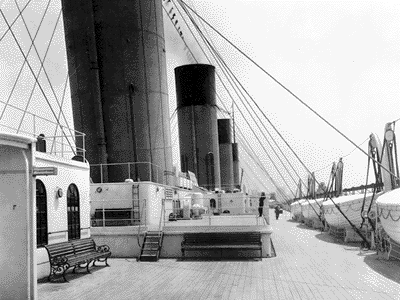 |
| This picture shows us the Titanics main deck. Many passengers (though most of third class were more commonly by the poop deck) would take a peaceful stroll. |
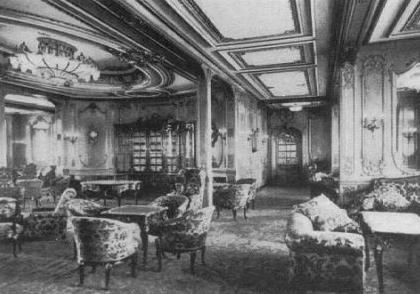 |
| This picture shows the Titanics lounge, which was supposedly for first class passengers to come here an relax. |
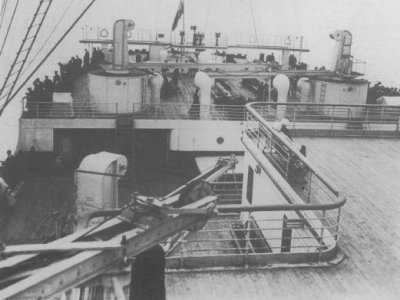 |
| The Poop Deck (above) was a common place for third class passengers to rest, mainly because they were not very "popular" among the more higher passengers. |
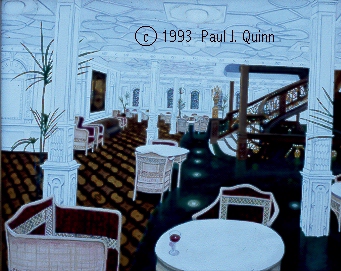 |
| This painting depics the reception of the Titanic. |
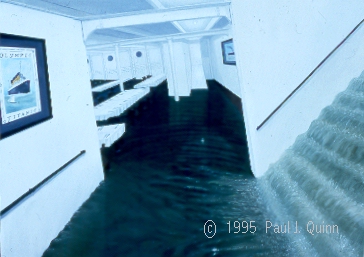 |
| The third class dining saloon is shown slowly filling with water in this painting. |
 |
| The Titanic sailing off from. supposedly, Cobh (now named Queenstown). |
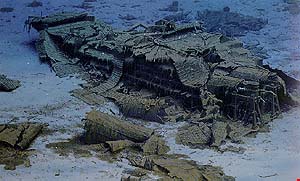 |
| The once mighty Titanic is in tattered ruins on the floor of the Atlantic Ocean, its final resting place. |
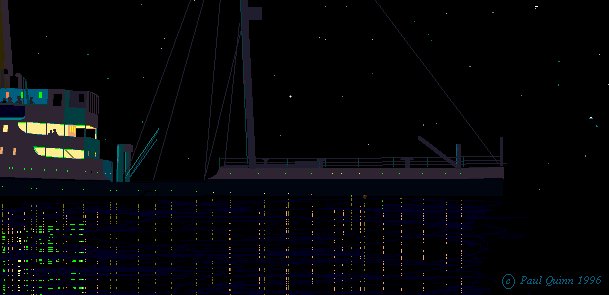 |
| Not long after the iceberg incident, the bow of the Titanic slips slowly under the ocean. |
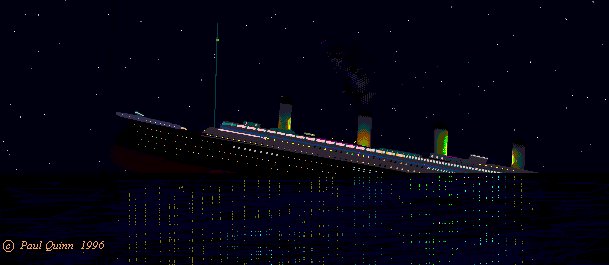 |
| Water floods into the mighty ship, the bow sinks deeper under the water and the stern is now rising in the air. People onboard scramble up the decks as the floor slopes diagonally. |
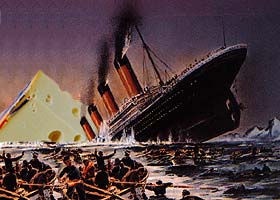 |
| The bow is now completely submerged and people jump from the stern into the water, trying to escape. The people in the life - boats watch in horror as the "unsinkable" Titanic goes down before their eyes. |
 |
| The Titanic rises very slowly out of the water, sending all loose objects and people plummeting towards the front of the ship. The vessel makes metallic groans, moments before it splits in half. |